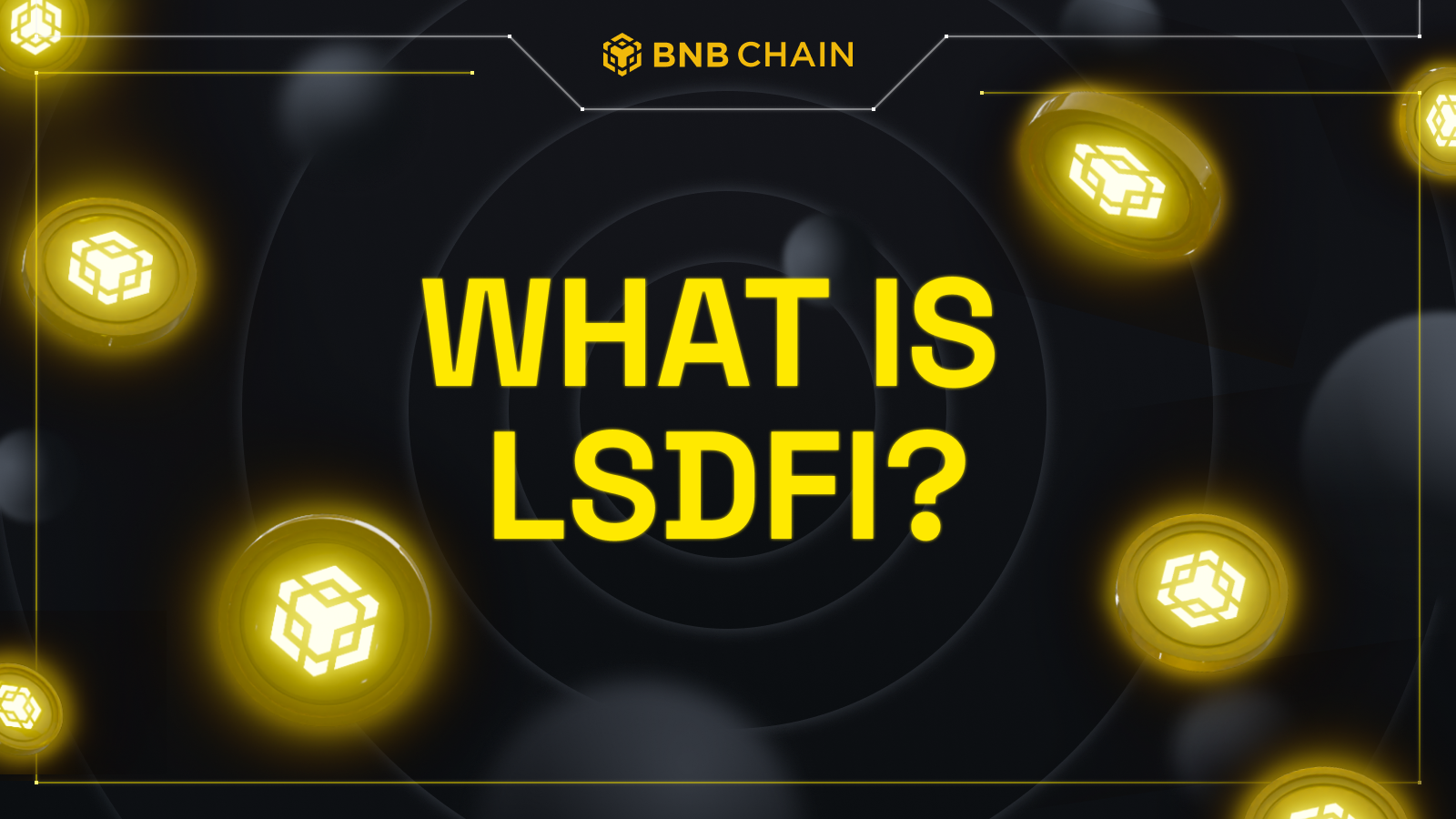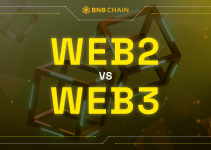Table of Contents

LSDFi, or Liquid Staking Derivatives in Decentralized Finance, allows staking cryptocurrencies while keeping them liquid. Dominating DeFi with a $47.65 billion TVL, it enhances staking rewards and financial flexibility, notably on BNB Chain.
The hottest sector in decentralized finance (DeFi) right now is undoubtedly liquid staking. Liquid staking is a process in which users stake their tokens in a protocol and, in return, receive an equivalent amount of tradable assets known as liquid staking derivatives (LSDs).
As per DeFiLlama, liquid staking currently commands a total locked value (TVL) of $47.65 billion.
The overall TVL (Total Value Locked) in the DeFi market is currently $93.30 billion, of which liquid staking accounts for a staggering 51.07%.
The driving force behind this movement is Liquid Staking Derivatives Finance (LSDFi). What is LSDFi? It is a concept which combines the principles of liquid staking derivatives with traditional DeFi applications to offer enhanced financial opportunities and flexibility to cryptocurrency users.
Lido pioneered the LSDFi space as a leading liquid staking protocol with the highest TVL at $28.70 billion. It allows users to stake ETH and receive stETH in return, enabling them to earn staking rewards and use stETH in other protocols for further financial activities.
This article explores “What is LSDFi,” its inner workings, use cases, and potential within the BNB Chain.
What is LSDFi?
LSDFi refers to the set of DeFi protocols that utilize LSDs to enhance the functionality and profitability of staked assets. Traditionally, staking involves locking up cryptocurrencies to support network operations, restricting liquidity as the assets cannot be used for other financial activities. LSDFi addresses this limitation by allowing staked assets to remain functional and liquid through the use of LSDs.
LSDs are tokens that represent staked assets within a blockchain protocol. These tokens continue to accrue staking rewards, but unlike the actual staked assets, they can be traded or used in various DeFi applications. This system allows users to earn passive income from staking while actively participating in the broader DeFi ecosystem.
How Does LSDFi Work? Looking Underneath The Hood
The overall workings behind LSDFi can be broken down into four steps:
- Staking: Users begin by staking their cryptocurrencies to a pool in supported networks. This process involves locking up the assets to provide security and functionality to the network.
- Tokenization: Once staked, these assets are represented as LSDs. These tokens reflect the staked amount and continue to earn rewards similar to the underlying assets.
- Liquidity: LSDs are designed to be liquid and tradable across various platforms. This allows users to engage in other financial activities without needing to unstake their assets. They can trade these tokens, use them as collateral for loans, or participate in yield farming.
- Rewards: Despite their liquidity, LSDs allow users to continue earning staking rewards. This dual benefit of liquidity and passive income is a key advantage of LSDFi, maximizing the potential returns on staked assets.
The flexibility of the LSDFi model ensures that users are not confined by the restrictions of traditional staking methods while still contributing to the security and integrity of the network by supporting consensus mechanisms.
Use Cases of LSDFi
LSDFi finds application in several innovative areas of the DeFi ecosystem:
- Interest Rate Swaps: Users can engage in financial strategies like interest rate swaps, using LSDs to speculate on yield variations and manage interest rate exposures.
- Risk Management: The tradeability of LSDs in secondary markets allows users to manage risk more effectively, offering a way to diversify investments and stabilize returns in volatile market conditions.
- Innovation: The ecosystem supports the creation of new financial instruments, such as index LSDs for diversified exposure and CDP stablecoins that utilize LSDs as collateral.
- GameFi: LSDFi enables players to stake in-game assets and earn rewards while still actively participating in the game’s economy. This creates a synergy between Web3 gaming and financial investment.
- NFTs and Physical Assets: LSDFi can extend to the tokenization of physical assets like gold or real estate, represented as NFTs. These NFTs can then be traded or used in DeFi applications, adding liquidity to traditionally illiquid assets.
- Liquid Staking Platforms: These platforms simplify the process of staking and managing digital assets. They provide a user-friendly interface for acquiring and handling LSDs, integrating seamlessly with various DeFi protocols.
LSDFi on BNB Chain: Enhancing Flexibility and Financial Opportunities
After rigorous testing by the core development team, BNB Chain has successfully integrated LSDFi capabilities. The LSDFi ecosystem on the BNB Chain introduces the following features:
- Security and Accessibility: A focus on security ensures that the private keys associated with LSDs are well-protected, maintaining trust and integrity within the ecosystem.
- Benefits for Delegators: With the introduction of LSDFi, delegators on the BNB Chain can enjoy compounded daily staking rewards and participate in direct governance through voting, enhancing their influence and returns.
- Increased Flexibility: The issuance of liquid staking tokens allows participation in other DeFi protocols without compromising staking yields, offering users greater flexibility and efficiency in managing their assets.
- Broadening the Validator Base: The new system encourages a wider range of participants to become validators, particularly those involved with LSD and LRT protocols, thereby diversifying the network’s expertise and strengthening the staking ecosystem.
What is LSDFi? In Closing
LSDFi marks a significant advancement in DeFi by providing increased liquidity, flexibility, and potential returns. Its integration into platforms like the BNB Chain is transforming staking into a more dynamic and lucrative aspect of the digital asset economy.
This evolution in DeFi enhances user interaction with staking mechanisms and broadens investment opportunities. As LSDFi continues to develop, monitoring its progress will be essential for stakeholders in the digital finance sector.


